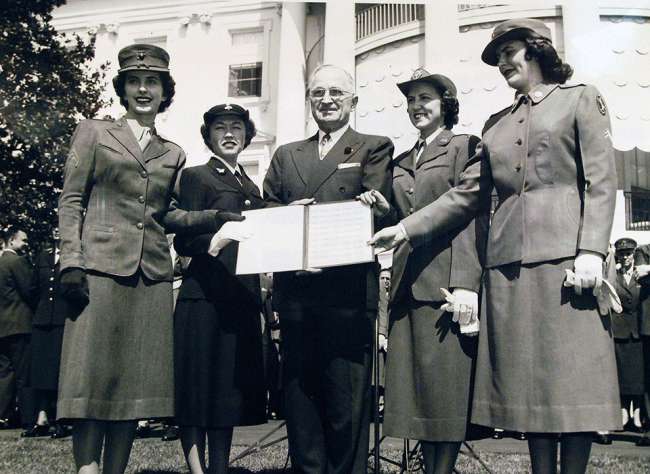During the Potsdam conference, a company of WAC telephone operators were flown from their Battalion Headquarters in Paris to staff the switchboards. They operated the large “Victory Switchboard” at the conference and also a smaller switchboard at President Truman’s residence, the “Little White House,” enabling fast and secure communication between President Truman and staff back in Washington, D.C. Following the conference, Truman thanked the servicewomen and congratulated them, stating that “they contributed materially to the success of the Berlin conference.” Truman wrote in his letter of commendation, “The installation of radio-teletype facilities there allowed me to keep in almost instantaneous touch with my offices in Washington and provided a steady flow of news and information which greatly assisted me during the Conference. I also enjoyed excellent telephone service at the Little White House and was pleased and surprised to learn that through the efforts of the Signal Corps, I could make the first telephone call from Berlin to the United States since December, 1941.”
Pass for New Orleanian WAC Teresa Gordon from the Potsdam Conference. Gift in Memory of Theresa Gordon, 2017.297
Instantaneous communication was, unlike today, most exceptional. Communication of all kinds was a critical component of good intelligence and having a sufficient number of trained, skilled operators at telephone switchboards was essential. The WACs were selected for the Potsdam assignment because of their skills, and because of the success of operators at the Quebec and Cairo Conferences two years prior. Generally, WACs were selected for many of these communications tasks with the Signal Service because they already had years of experience in the very tasks they were called on to perform—often clerical, administrative, and communications duties. Such was the case with working the switchboards; women were selected as operators because of their training and skill.
Women had worked as telephone operators since the telephone’s invention. They were viewed as more courteous and also were cheaper to employ. Some women entered the WAC under the WIRES program (Women in Radio and Electrical Service); these recruits typically continued to perform the specialties they had in civilian life. Their familiarity with various systems and the experience connecting calls through circuits allowed for greater efficiency than working with new trainees. When plans for women to enter service were first discussed, General George Marshall actively supported the use of women in the communications realm. Marshall and others considered women perhaps better suited for these tasks which were repetitious and required patience and manual dexterity.
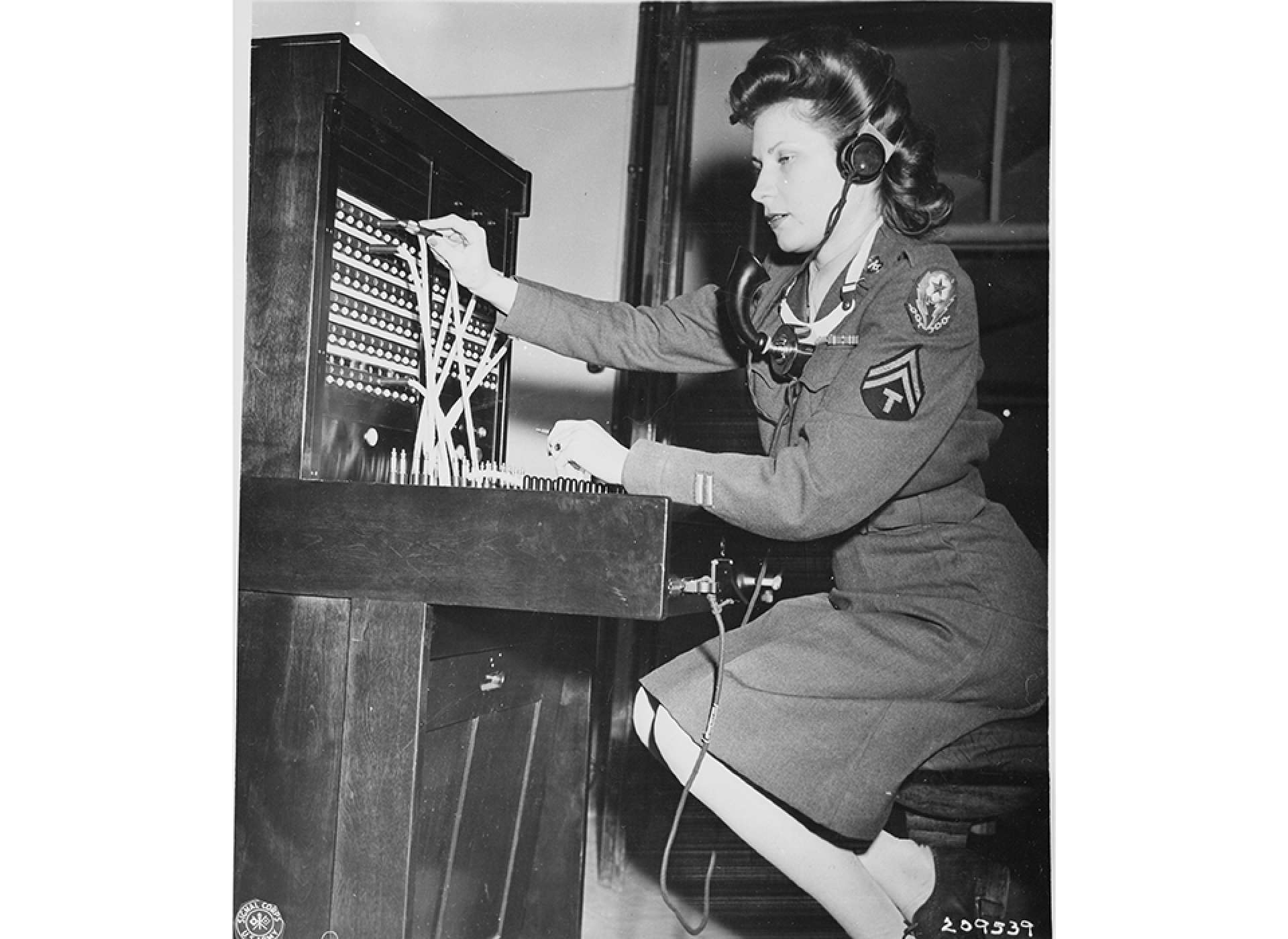
WAC Cpl. Alma Bradley operates the switchboard at the "Little White House," the residence of President Harry S. Truman during the Potsdam Conference in Germany. Courtesy National Archives.
The first WACs deployed in the European theater arrived in England in July 1943. They were put to work immediately in support roles for the Eighth Air Force. There they served in clerical, administrative roles, but also as cryptographers, photo interpreters and motor pool drivers. The WACs who worked the telephone systems were in demand, a demand that remained high until the very end of the war.
Exactly one year after the first group of WACs landed in England, WACS arrived in France. On July 14, 1944, D+38, the WACs arrived and assumed control over switchboards that had only recently been controlled by the enemy. They lived and worked in tents, cellars, and switchboard trailers. On August 16, 1944, WAC Staff Director, Lt. Col. Anna Wilson wrote a letter home to WAC T/5 Teresa Gordon’s parents in New Orleans, after she was one of the first WACs to arrive in France. “She is tan from the sun and glowing with health from outdoor living.”
A week after the liberation of Paris, the WAC operators arrived and set to work on the city’s switchboards. The city would serve as the Headquarters of the WAC Battalion, designated with the unusual nomenclature of the %3341st Signal Service Battalion. When the battalion was organized by the Signal Corps, it lacked the combat equipment needed according to standard organization tables, so the percent mark was used by the Signal Corps to set this unit apart, to indicate on paper that the unit was composed solely of female noncombatants. The Battalion consisted of officers, switchboard teams, message center teams, and teletype teams. The Battalion reached peak strength with 28 officers and 738 enlisted women. The Headquarters at Paris was said to have been the largest message center in the world outside of Washington, D.C.
A WAC bulletin described how they functioned as Allied troops advanced: “Telephone operators donned earphones as fast as mobile switchboards were set up, worked long shifts day after day. In a chateau wine cellar in Area I, operators worked the board while rainwaters swirled around their feet.” Then later in Germany, “Scores of operators, members of the %3341st Signal Service Battalion, now under the command of Maj. Jane A. Stretch, Newtown, PA., went on duty at telephone switchboards where German voices had been heard just a short time previously.”
The work was not always difficult, but the importance of the task and the secrecy of the information the women overheard was demanding. One WAC inspector reported:
“Severe nervous strain was imposed by the necessity for constant attention...no thought was required for much of it, yet the worker did not dare let the work become automatic, as one slip wrecked everything, and the fear of costing men’s lives was always with them.”
The WACs who worked the switchboards in World War II had an esteemed lineage. The Signal Corps Female Telephone Operators Unit, informally known as the disparaging “Hello Girls,” were sworn into the US Army Signal Corps and served with distinction in the American Expeditionary Forces. When the call was put out for women for the outfit, more than 7,000 volunteered for the 450 available spots. Qualifications included a fluency in French and English. Eventually, 223 “bilingual wire experts” were sent overseas where they fielded over 26 million calls while in American uniform. Despite their significant contributions, they were not recognized for their service. Ultimately these women were viewed as civilian contractors after World War I and were not given veterans status or benefits until 1978, the 60th anniversary of the end of World War I.
The Women’s Army Corps operators of World War II faced similar odds. One WAC recalled being instructed to lie and say she had served as a nurse, because of the stigma that WACs did not play a serious role, but were only there for the pleasure of the men. Many families of the women who served also held mixed emotions about their daughters serving. WAC Lt. Col. Anna Wilson wrote T/5 Teresa Gordon’s parents, “She and hundreds like her have already earned their right to a distinguished place in the great history of the Army of the United States. In the European theater, one fourth of all WACs in service, or 1,700 women, were attached to the Signal Corps, including the 30 women who “contributed materially” to the success of the Potsdam Conference.
-

PFC Gladys Bellon, Basile, Louisiana, one of the 27 WAC switchboard operators flown from Paris for the Potsdam Conference and Sgt. Robert Scott of Pittsburgh, Pennsylvania, test lines in the frame room of the Victory switchboard at US headquarters at Babelsburg, Germany. Courtesy National Archives.
-

S. Sgt. Edith Royer, chief operator of the Victory switchboard at US headquarters in Babelsburg, Germany during the Potsdam Conference, keeps her eye on the switchboard, which is staffed by WAC telephone operators flown from Paris for the conference. She is from Library, Pennsylvania and is also working on the conference telephone directory. Courtesy National Archives.
-

PFC Isabella Hardacre, Chicago, Illinois, a WAC telephone operator in US headquarters at the Potsdam Conference in Germany disposes of hundreds of inquiries a day on the information phones of the headquarters switchboard. Courtesy National Archives.
-

WAC telephone operators Cpl. Alma Bradley and Cpl. Eleanor Moynihan leaving the "Little White House," residence of President Harry S. Truman during the Potsdam Conference. PFC William Gleason at gate. Courtesy National Archives.
-

S. Sgt. Lorraine Robitaille, switchboard supervisor, from Duluth, Minnesota, looks down the line of the Victory switchboard during the Potsdam Conference. She is at U. S. Headquarters in Babelsburg, Germany. Courtesy National Archives.
-

Captain Elizabeth Hoisington, in charge of WAC's in the Berlin conference area, gives final instructions to telephone operators PFC Guadalupe Torres and PFC Frances Gribble during the Potsdam Conference in Germany. Courtesy National Archives.
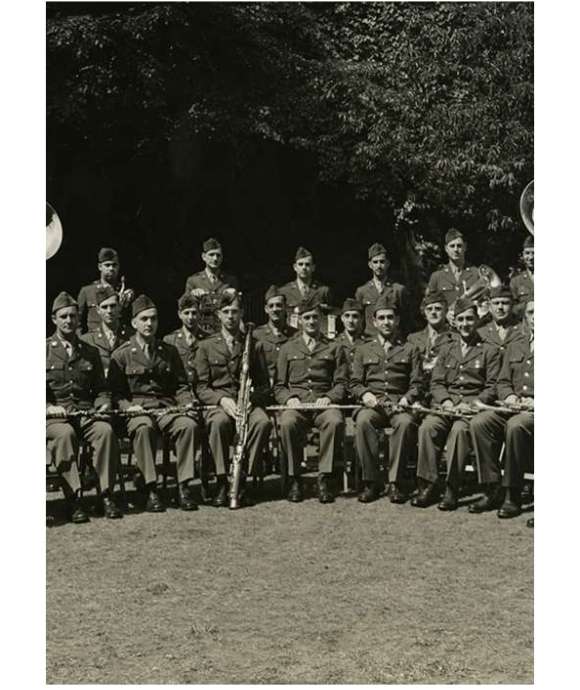
The 156th Infantry Band, the Potsdam Conference House Band
The 156th Infantry Band, a regimental band from Louisiana, brought a New Orleans flair to one of the most influential postwar moments in Europe, when they were selected to provide the musical backdrop for the Potsdam Conference as the “house band” at the Little White House.
Kim Guise
Kimberly Guise holds a BA in German and Judaic Studies from the University of Massachusetts Amherst. She also studied at the Universität Freiburg in Germany and holds a masters in Library and Information Science (MLIS) from Louisiana State University. Kim is fluent in German, reads Yiddish, and specializes in the American prisoner-of-war experience in World War II.
Cite this article:
MLA Citation:
APA Citation:
Chicago Style Citation:

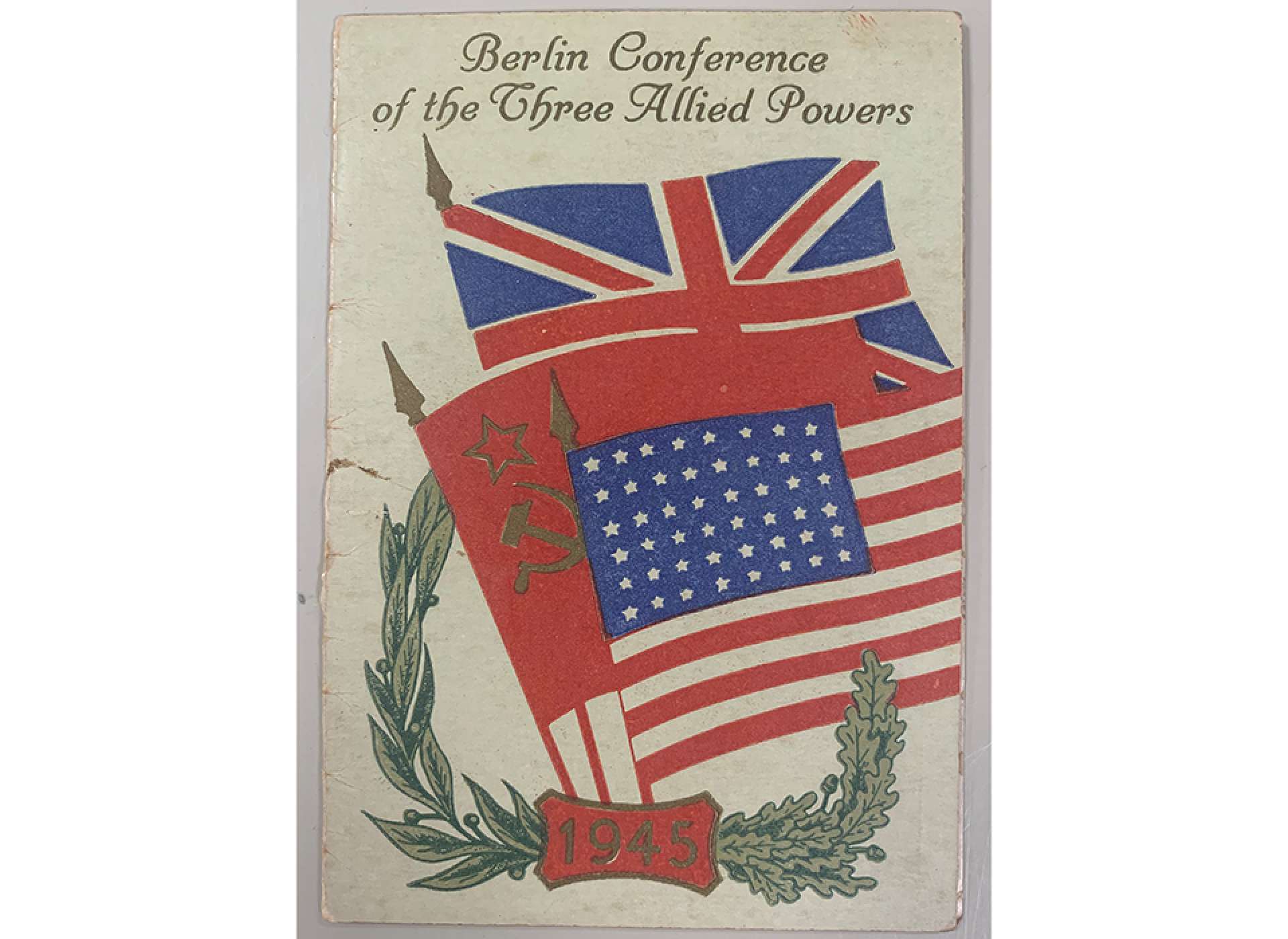
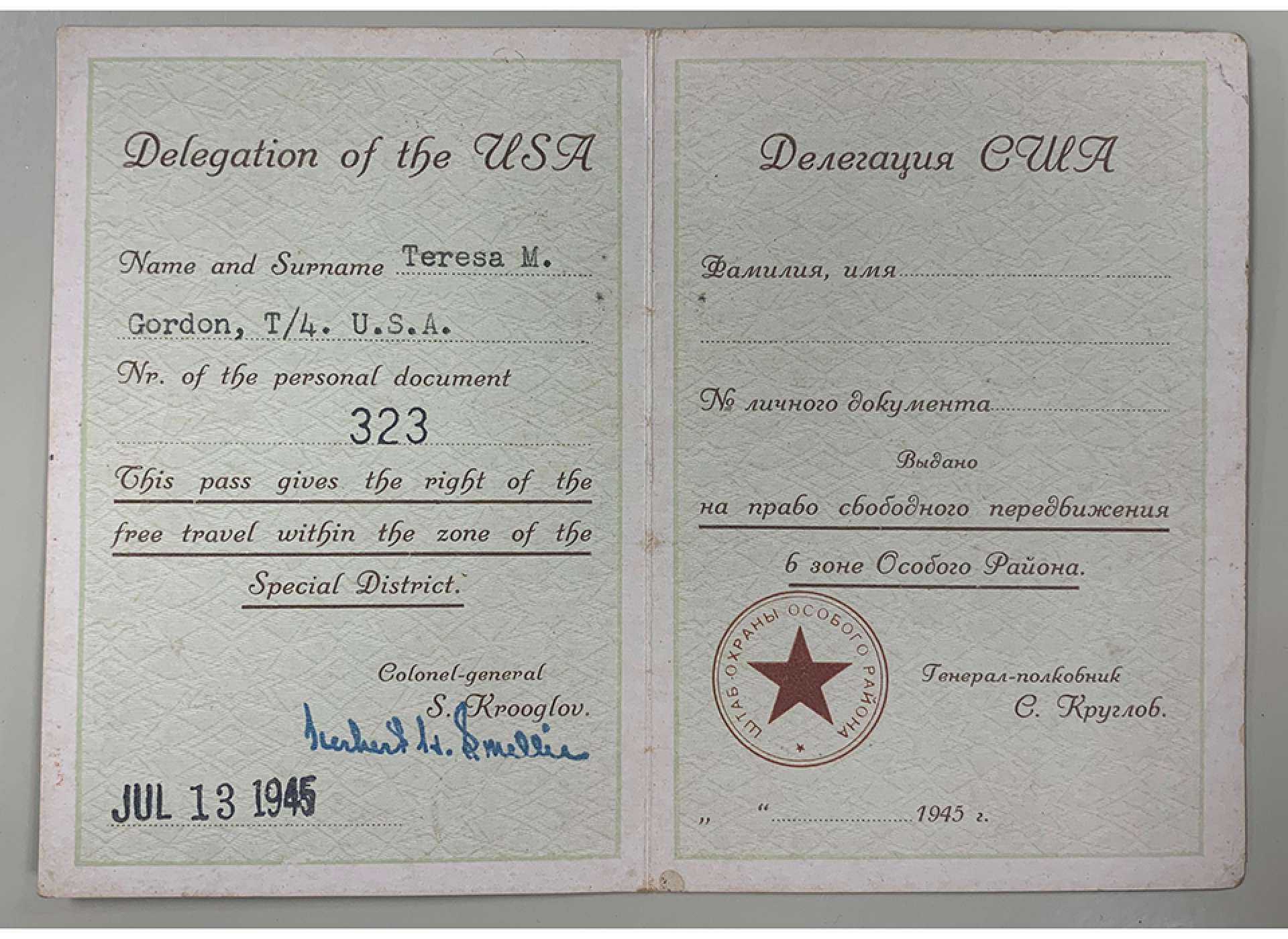
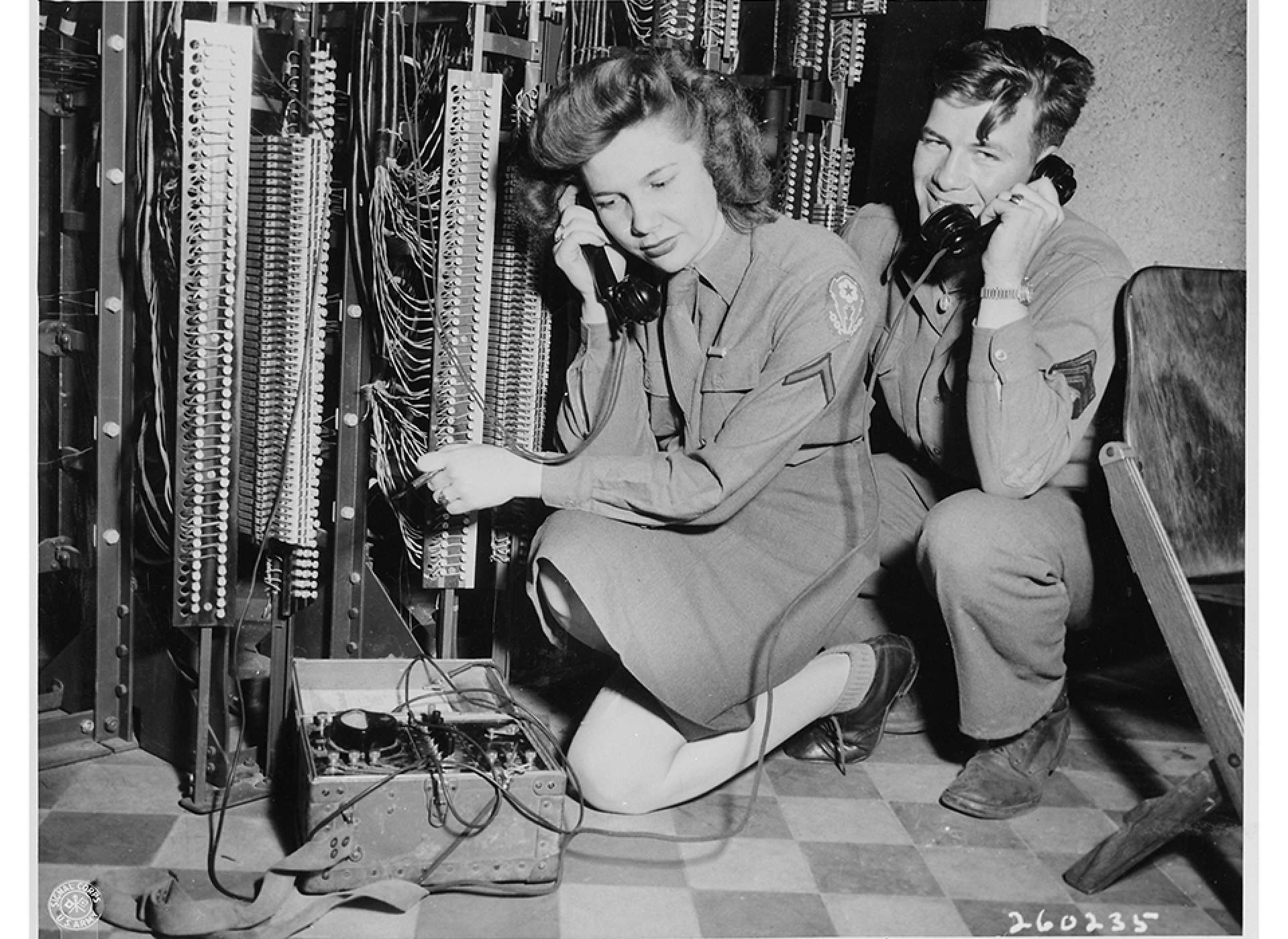
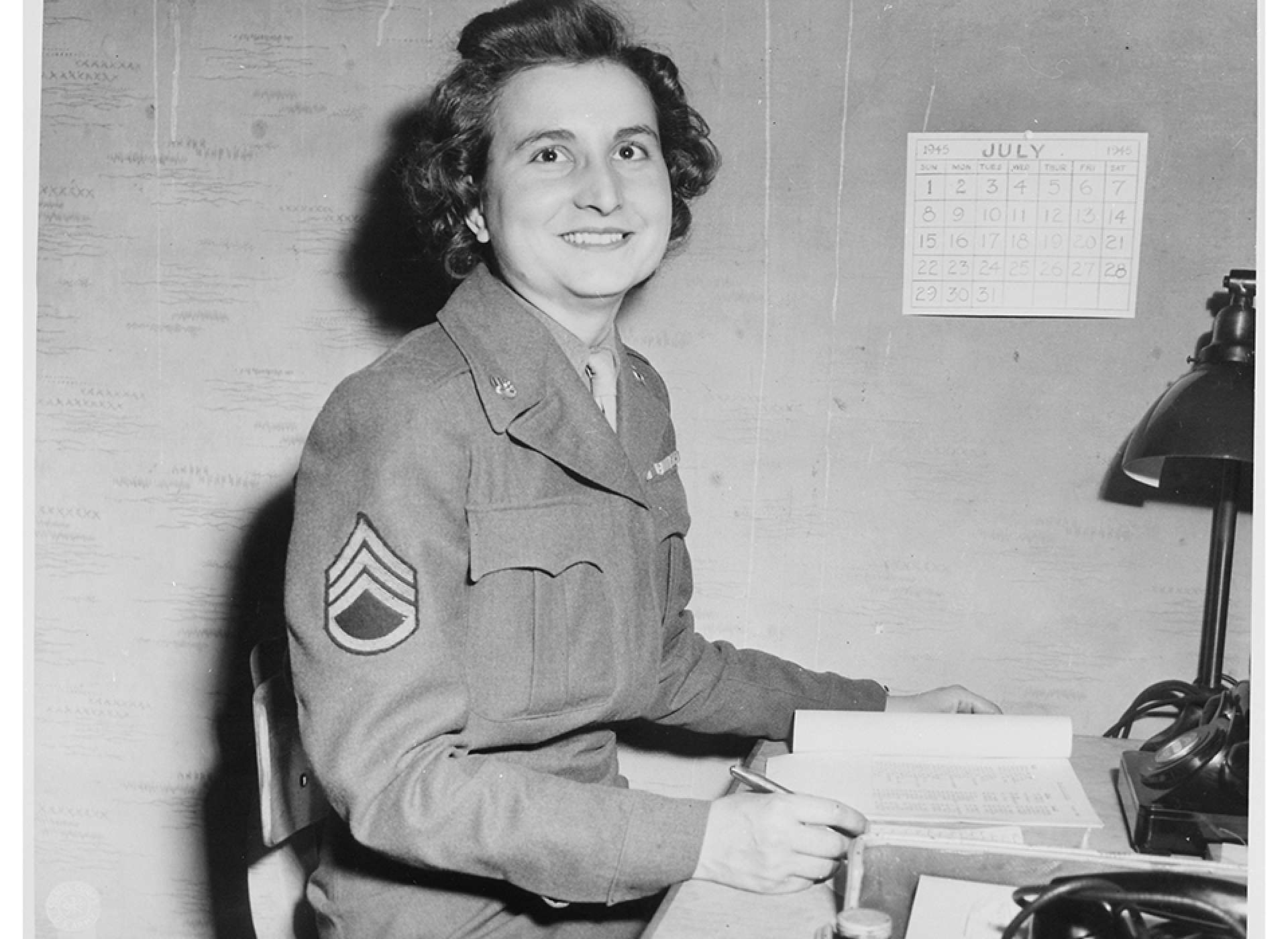
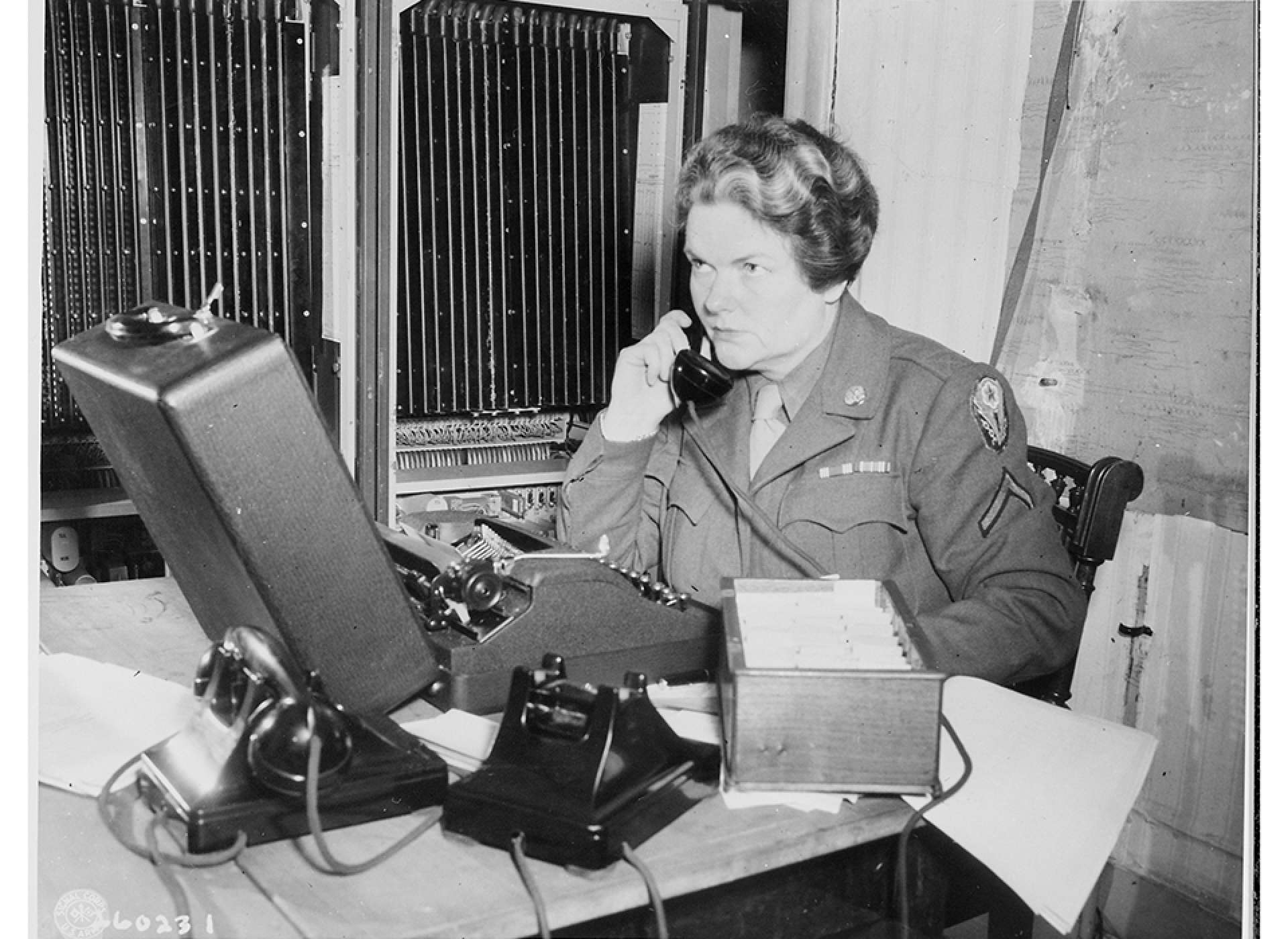
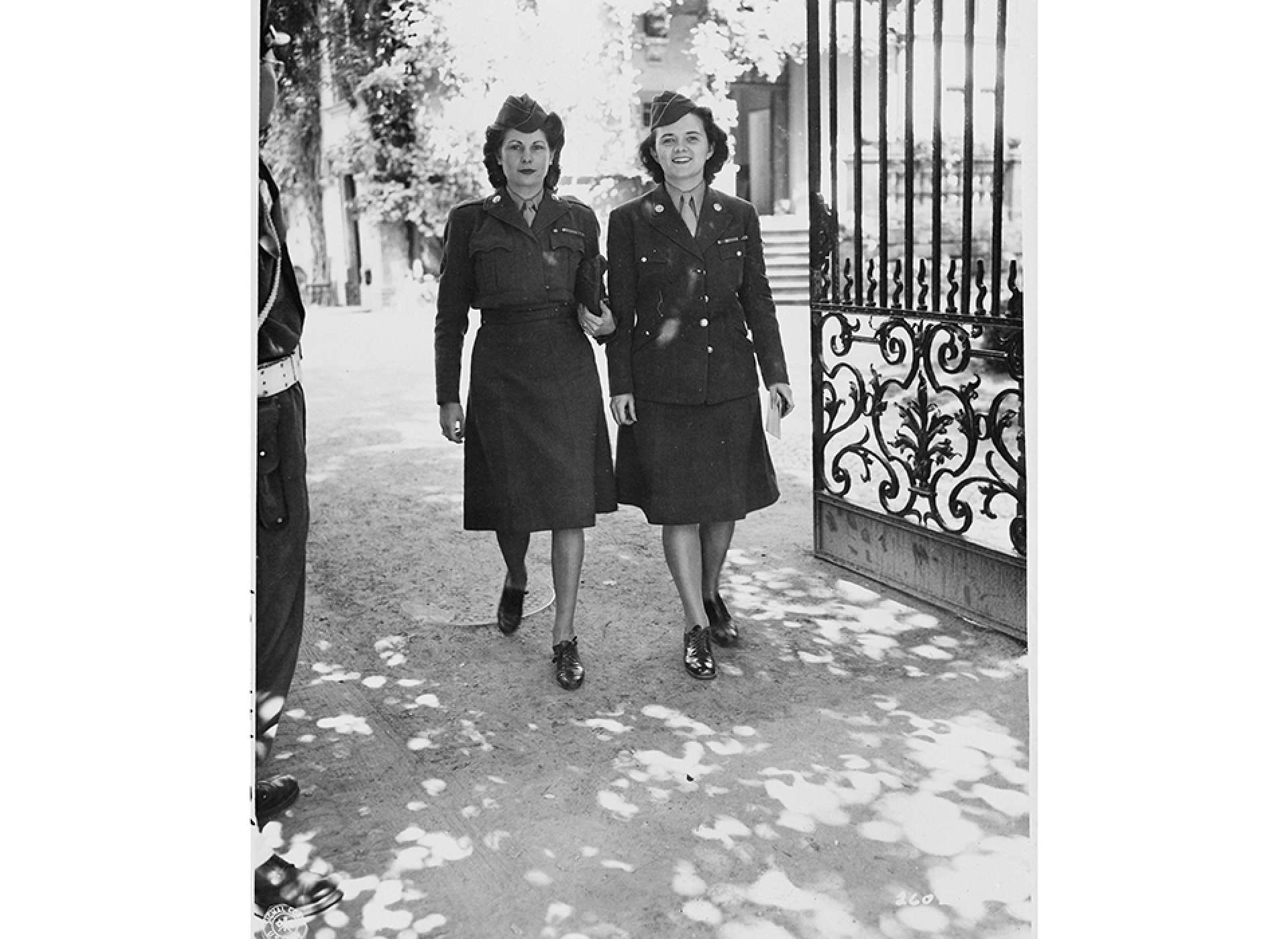
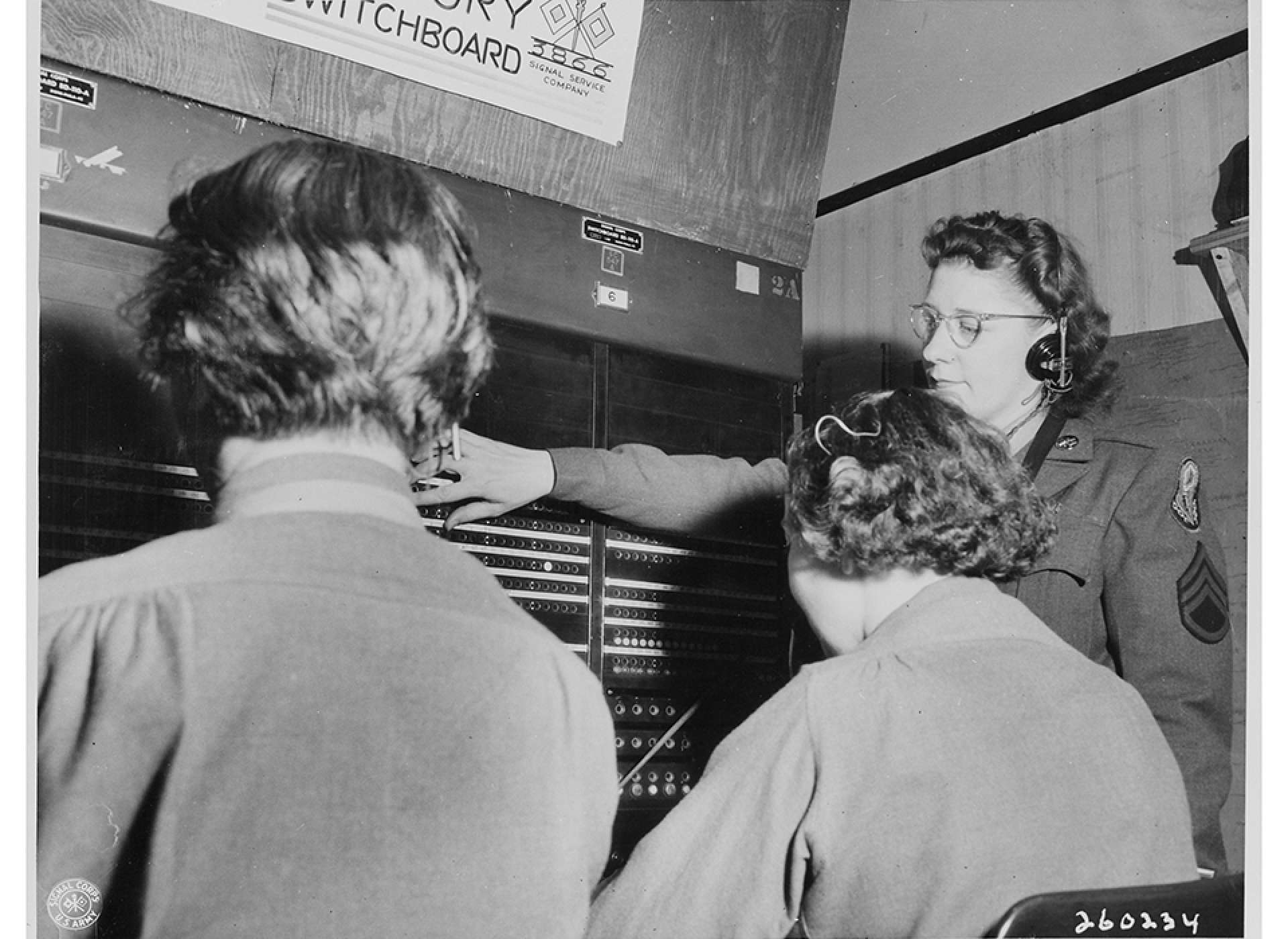
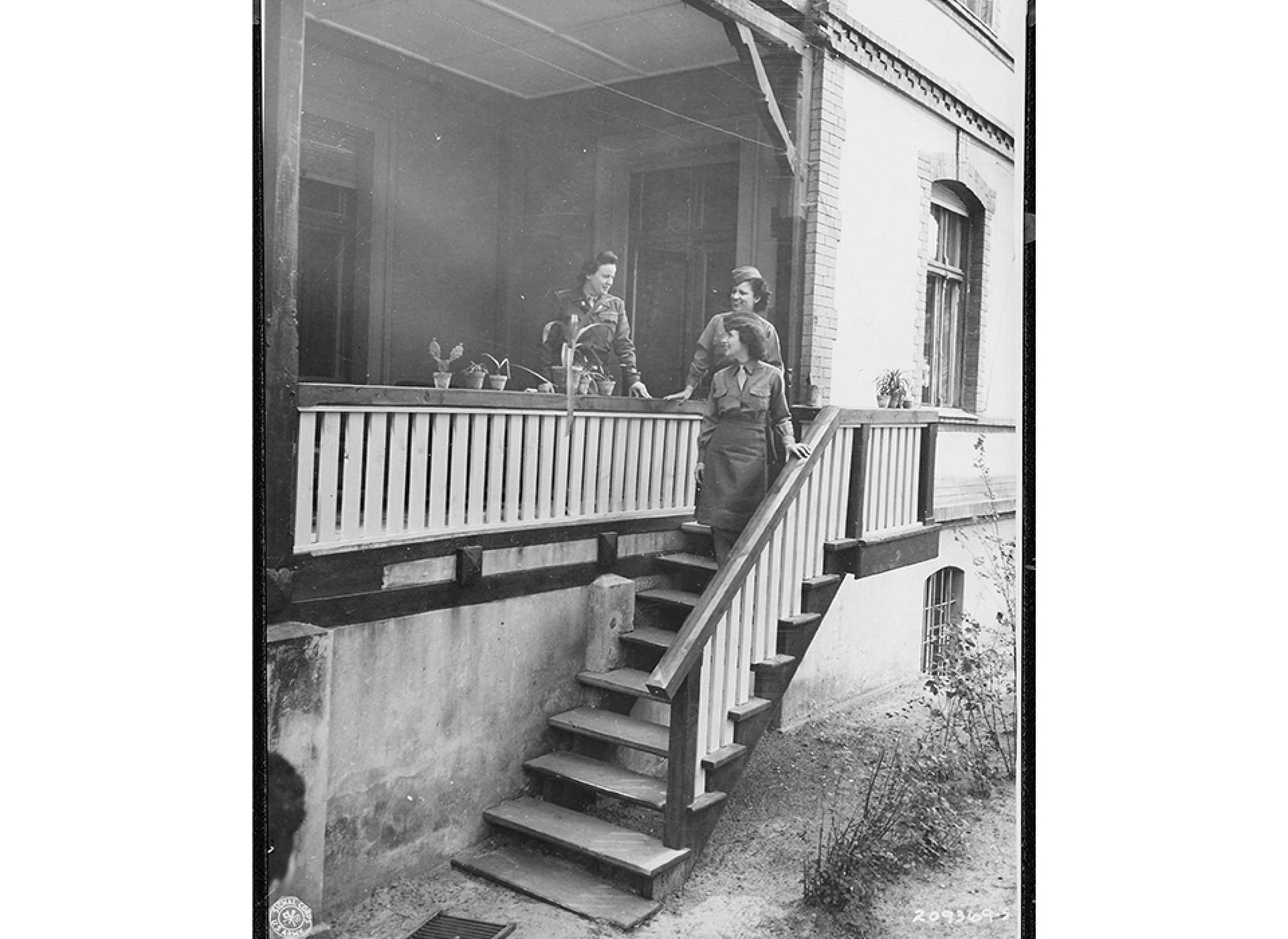

![Max Fuchs, New York City cantor, sings as Rabbi Sydney [sic] Lefkowitz, Richmond, VA, conducts the first Jewish services from Germany.](/sites/default/files/styles/max_650x650/public/2025-10/image1.jpg)



